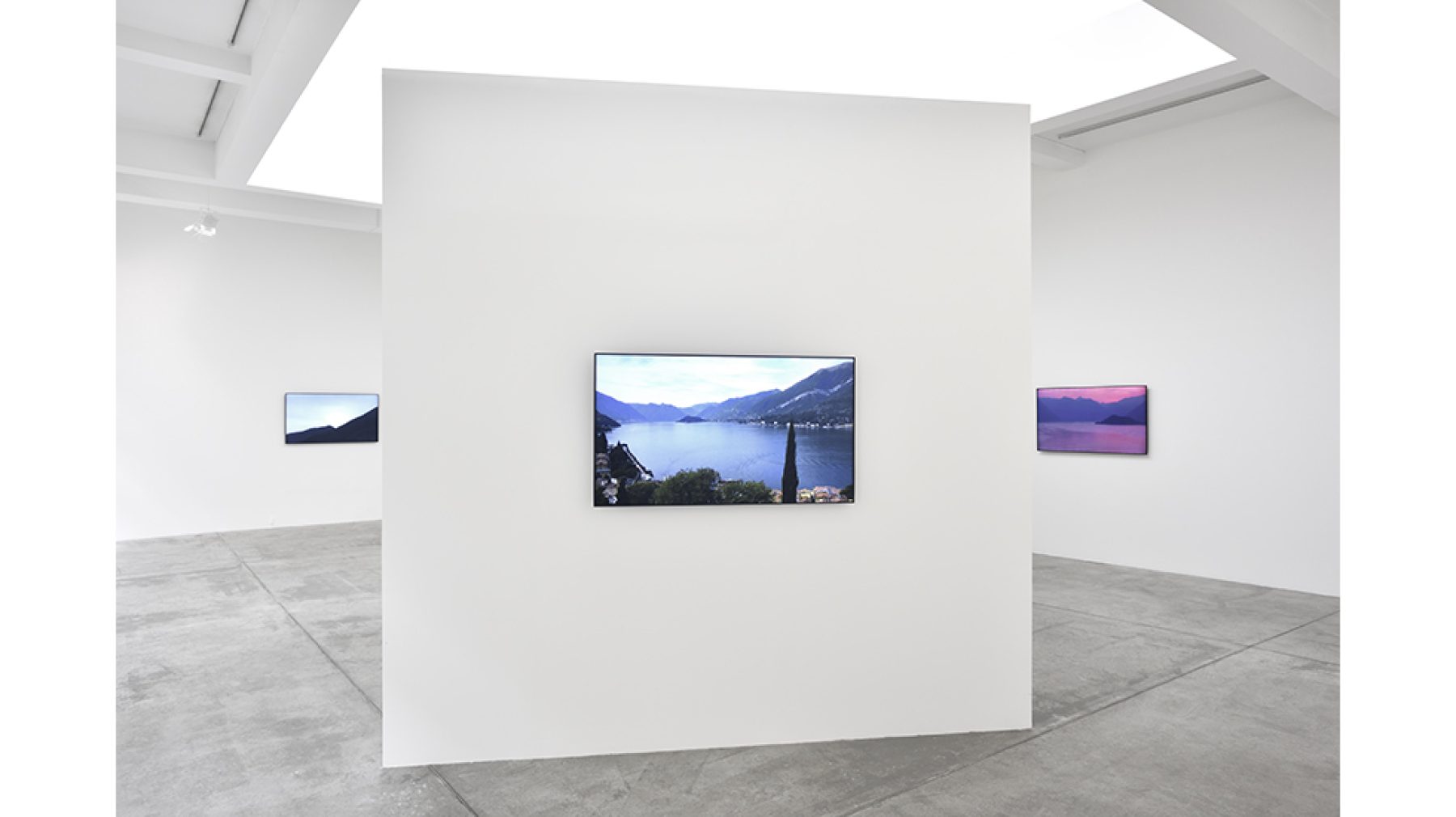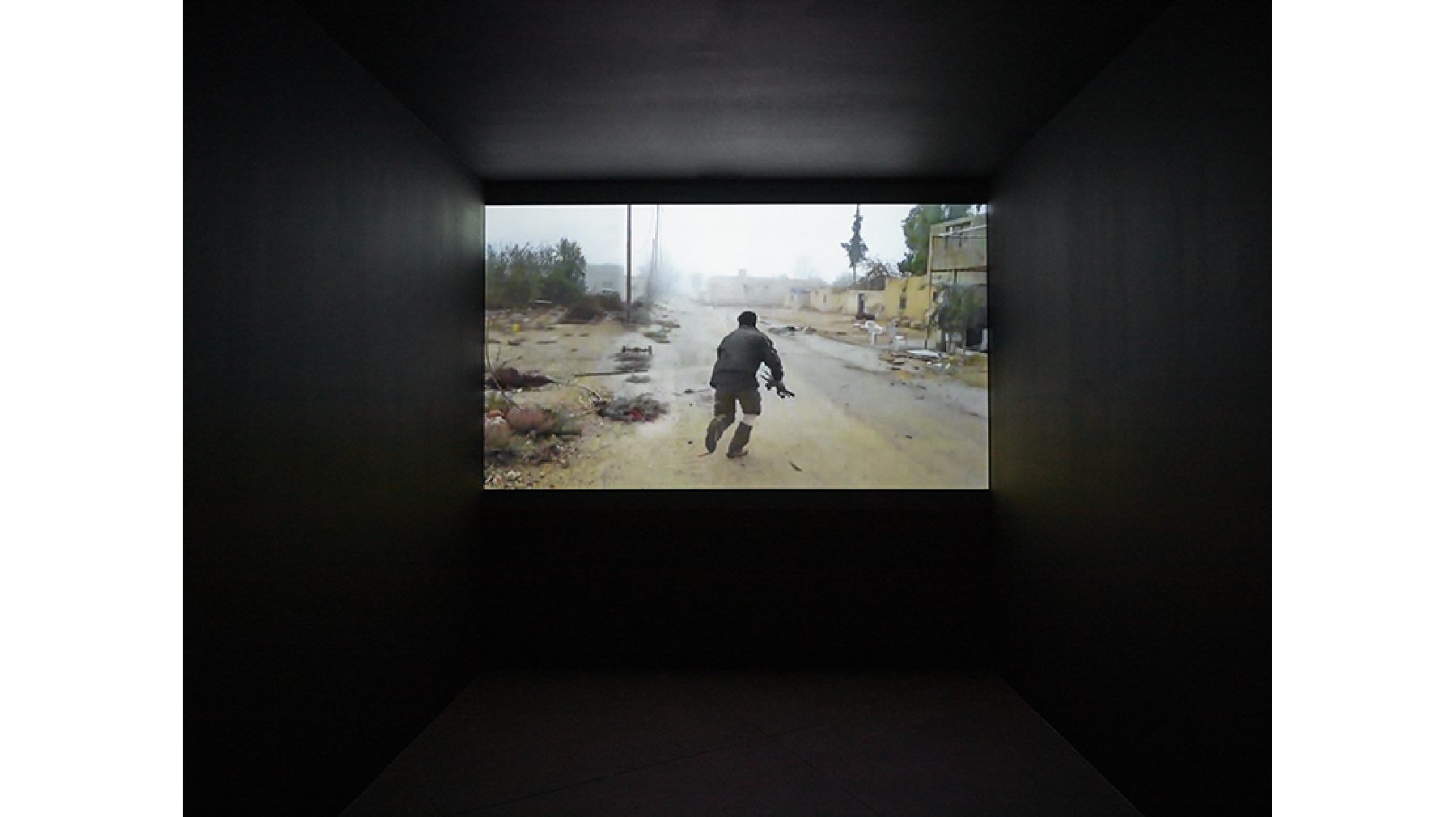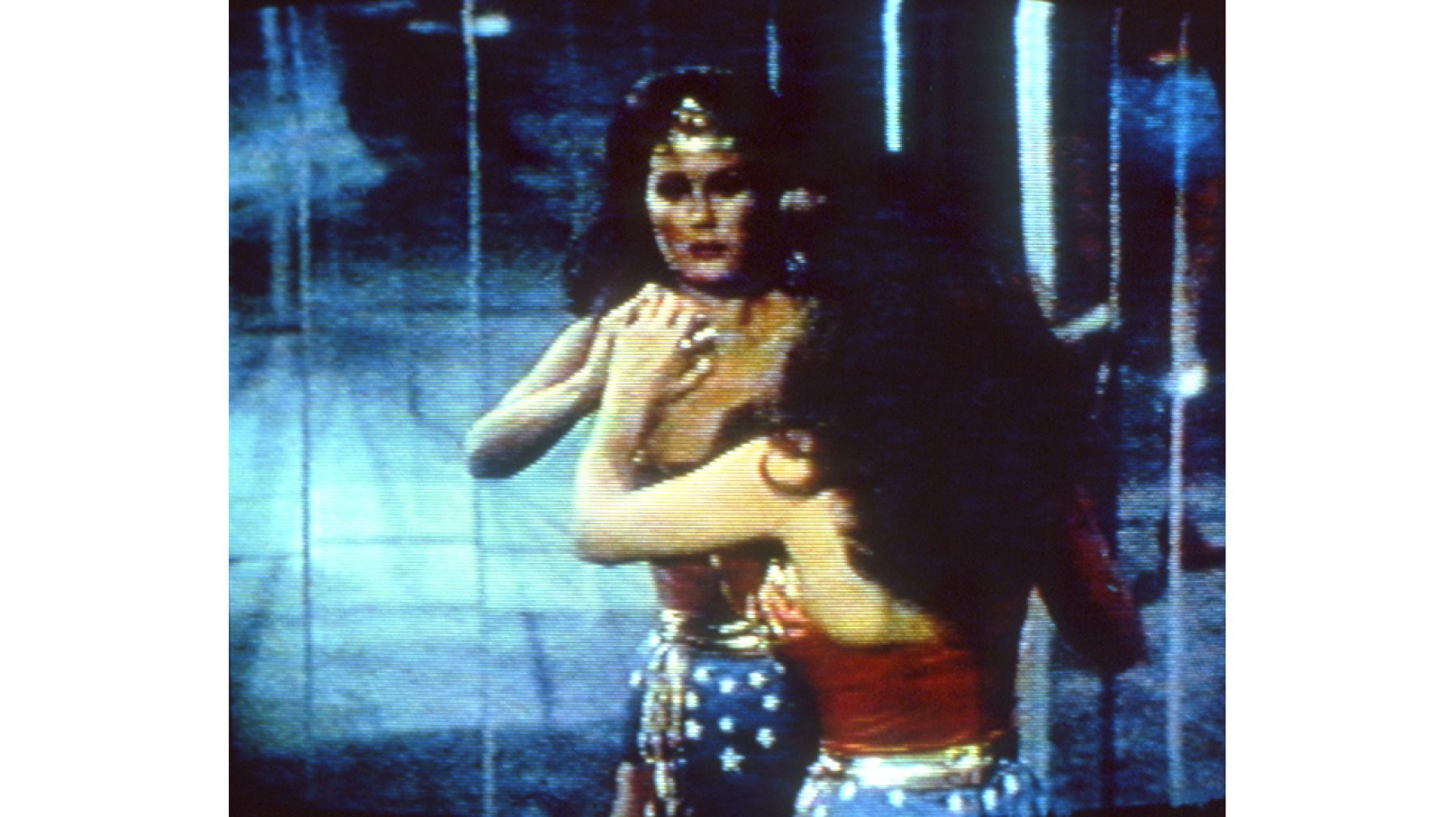This program happened on March 29, 2018.
Dara Birnbaum

Dara Birnbaum. Courtesy of the artist and Marian Goodman Gallery.
Birnbaum’s pioneering video, media, and installation work has, over the past four decades, addressed the ideological and the aesthetic character of mass media imagery and has been considered fundamental to our understanding of the history of media art. Birnbaum made her first video installation, “Attack Piece” in 1975. Resisting the tendency for video to be limited to being solely as a projection in a darkened space, Birnbaum released video and media art work from these conditions. Thus, becoming one of the first artists to design complex and innovative installations that juxtapose imagery from multiple source - at times utilizing large-scale photographs, sculptural or architectural elements. She is known for her groundbreaking strategies and for using manipulated television footage.
Born in New York in 1946, Dara Birnbaum received a Bachelor of Architecture degree from Carnegie Mellon University, Pittsburg, a B.F.A. in Painting from the San Francisco Art Institute and a Certificate in Video and Electronic Editing at the Video Study Center at the New School for Social Research, New York. Since her first solo exhibition in New York, at Artists Space in 1977, Birnbaum has had solo shows in numerous renowned international museums, such as: The Museum of Modern Art (MoMA), New York ; the Whitney Museum of Art, New York; the Jewish Museum, New York; Stedelijk Museum, Amsterdam; IVAM, Institut Valencià d’Art Modern (Centre del Carme), Valencia (1990). Major retrospectives of her work include the Kunsthalle Wien (1995) and ”Dara Birnbaum: The Dark Matter of Media Light,” which was organized by the Stedelijk Museum voor Actuele Kunst (S.M.A.K.), Ghent, Belgium and also the Museu de Arte Contemporânea de Serralves, Porto, Portugal (2010). In conjunction with the retrospective, a major monograph on Ms. Birnbaum’s work, The Dark Matter of Media Light, was published by Prestel Publishing.
The artist has been featured in a vast number of important group exhibitions, festivals and biennales such as numerous Venice Biennales and Documenta 7, 8, and 9, Kassel. Furthermore, her work has been shown at: the South London Gallery (2011); the Reina Sofia, Madrid; MACBA, Barcelona, Spain; MuMOK, Vienna (2010); The Metropolitan Museum of Art, New York (2009); Modern Museet, Stockholm, Sweden, (2009); The National Museum of Modern Art, Tokyo, Japan (2009); Ullens Center for Contemporary Art (UCCA), Beijing; The Museum of Contemporary Art, Los Angeles; the San Francisco Museum of Modern Art; Centre Georges Pompidou, Paris; Castello di Rivoli, Turin, Italy; and the Tate Gallery, London.
In 2018 Birnbaum will be exhibiting at the: ICA, Boston; List Center for Visual Arts, MIT; ICA, Philadelphia; Hirshhorn Museum and Sculpture Garden, Washington, D.C.; and the National Portrait Gallery, London; amongst others.
Birnbaum has been the recipient of various distinguished awards such as: The Rockefeller Foundation Bellagio Center Arts Residency (2011); the Pollock-Krasner Foundation Grant (2011); and the prestigious United States Artists Fellowship (2010). Last spring, she was recognized and honored for her work by The Kitchen, New York, at their annual gala. She is the first woman in video to receive the prestigious Maya Deren Award by the American Film Institute, in 1987. In February 2017, Carnegie Mellon University's School of Art created The Birnbaum Award in the artist’s honor. The Birnbaum Award will be presented annually to a graduating senior whose work exemplifies exceptional art at the intersection of media and technology.
This program is in collaboration with the ICA/Boston exhibition Art in the Age of the Internet, 1989 to Today and the Visual And Environmental Studies Department.

Dara Birnbaum, Psalm 29(30), 2016. Six-channel video and sound installation, color; 8 min., looped. Installation view Marian Goodman Gallery, Paris, 2016. Courtesy of the artist and Marian Goodman Gallery.

Dara Birnbaum, Psalm 29(30), 2016. Six-channel video and sound installation, color; 8 min., looped. Installation view Marian Goodman Gallery, Paris, 2016. Courtesy of the artist and Marian Goodman Gallery.

Dara Birnbaum, Erwartung/Expectancy, 1995/2001. Video projection on duraclear mounted on plexiglass with quadraphonic sound. Installation view Marian Goodman Gallery, New York, 2001. Courtesy of the artist and Marian Goodman Gallery.

Dara Birnbaum, Arabesque, 2011. 4 channel video installation; 4 audio stereo channels; 6 min 30 sec. Installation view Marian Goodman Gallery, New York, 2011. Courtesy of the artist and Marian Goodman Gallery.

Dara Birnbaum, Transmission Tower: Sentinel, 1992. Eight-channel color video, 2:48 min; 2 sections of ROHM® transmission tower, 9 stereo channels of audio with custom hardware. Installation view Documenta 9, Kassel, Germany, 1992. Courtesy of the artist and Marian Goodman Gallery.

Dara Birnbaum, Technology/Transformation: Wonder Woman, 1978-79 (video still). Single-channel video, color, sound, 5 min 50 sec. Courtesy of the artist and Electronic Arts Intermix, New York.

Dara Birnbaum, Kiss the Girls: Make them cry, 1979. Two-channel video, color, stereo, 6 min 26 sec. Installation view Art Institute of Chicago, 2017. Courtesy of the artist and Marian Goodman Gallery.

Dara Birnbaum, Tiananmen Square: Break-In Transmission, 1990. Five-channel color video, four channel stereo sound, surveillance switcher and custom-designed support system. Installation view S.M.A.K, Ghent. Courtesy of the artist and Marian Goodman Gallery.
Archive
Explore more of our rich history through our archive.